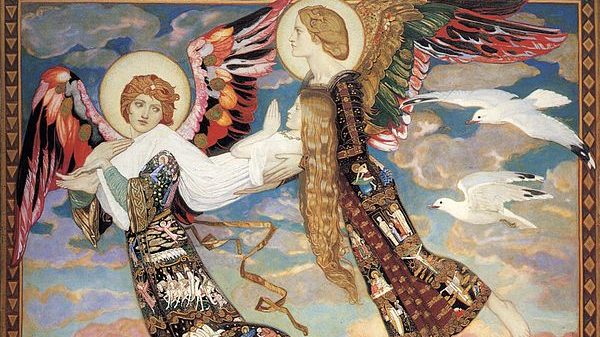St. Brigid of Ireland was born around the year 450, near the end of St. Patrick’s missionary work, but it has been difficult for historians to pin down the details of her life. Various accounts have conflicting claims about her life, but one of the more credible biographies is an essay in “The Saints of Ireland” by Hugh de Blacam.
Brigid was born out of wedlock to a Christian slave woman named Broicsech. Her father was the pagan chieftain Dubthach. The chieftain sold Brigid’s mother to a new master, but arranged to have Brigid returned to him. De Blacam writes that Brigid was likely baptized and raised Catholic by her mother, and went to her father and his wife around the age of 10.
Brigid continued to live her faith in her father’s house. She gave away her father’s food and possessions to the poor, which enraged him. Dubthach threatened to sell Brigid to the King of Leinster, as she was living as a household servant and not a full family member. But the king convinced Brigid’s father to set his daughter free.
Once she was free, Brigid was expected to marry, but she wanted to devote herself to God as a consecrated virgin. She even disfigured her face so that potential suitors would find her ugly. Dubthach eventually gave Brigid permission and the means to pursue her plans.
Although the Irish Church had developed consecrated religious life, in Brigid’s time, there was no systematic order to those living this way. Women who had taken vows of celibacy often lived in everyday life, or with the help of benefactors. Brigid and a group of seven companions are credited with organizing communal consecrated religious life for Irish women.
Bishop Mel of Ardagh, who was St. Patrick’s nephew, accepted Brigid’s profession as a nun. According to tradition, when he did, Brigid’s beauty reappeared, and the disfigurement on her face was gone. St. Mel went on to be Brigid’s mentor, and after he died, Brigid’s community resettled in what is now known as Kildare (“Church of the Oak”).
As a nun, Brigid spent a lot of time in prayer, but she also worked hard, raising sheep, making cloth, and as a dairy farmer. This combination of work and prayer attracted many followers. Kildare had the only double monastery, with a separate men’s community led by Bishop St. Conleth.
Brigid’s movement spread throughout Ireland, and it is evident that she traveled throughout the island to found houses and build Irish monasticism. Kildare played a major part in Christianizing Ireland, and her influence was felt for centuries after.
St. Brigid of Ireland died around 525. She is said to have received the last sacraments from St. Ninnidh, who had been inspired by her to become a priest.

